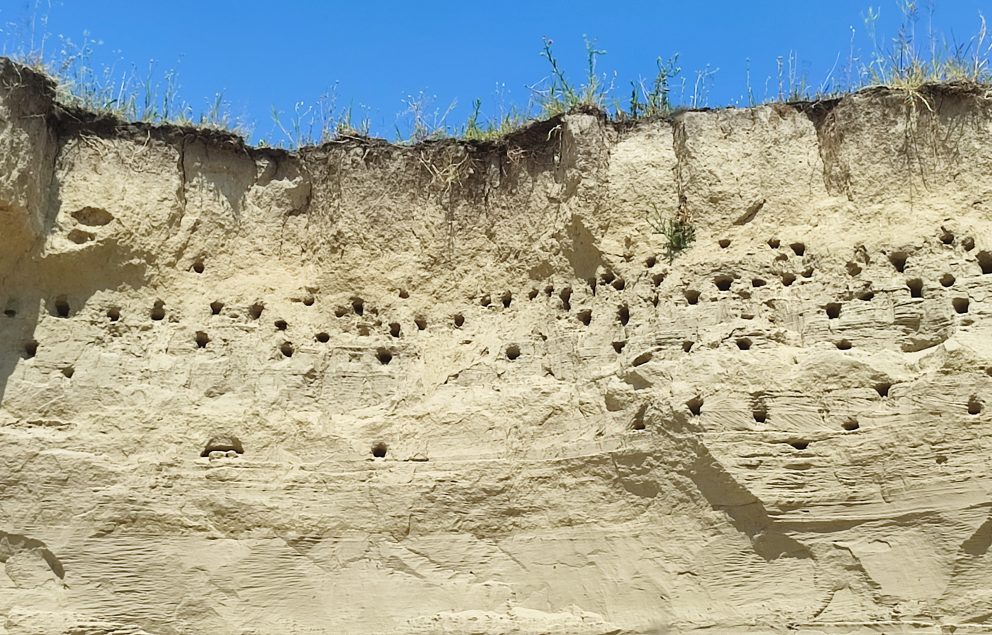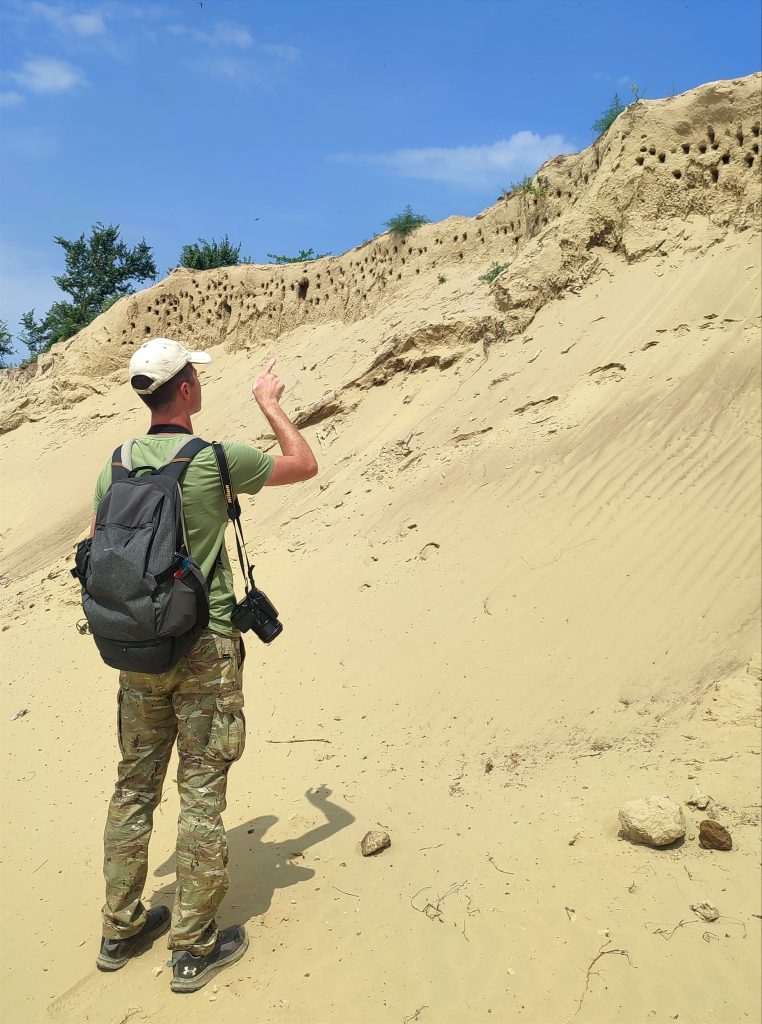
Second phase of ongoing EBCC project in Serbia continues successfully
September 10, 2025 | Marina Kipson
Bird Protection and Study Society of Serbia received support for the project “Survey of poorly known forest birds and the first census of Collared Sand Martin (Riparia riparia) colonies in Serbia” through EBCC Small Grant Fund in 2024. Survey of forest species has ended by the beginning of June, after which the focus shifted to the census of Collared Sand Martin (Riparia riparia) colonies. First step for the census included selection of the data about known breeding colonies from BPSSS database together with satellite marking in search of potential sites for active colonies. Both old and currently active colony sites were visited, together with all idenitified potential areas which were concentrated along the big rivers, sand, gravel and clay digs, fishponds and large construction sites.
Methodology and preliminary results
Before field work activities started, BPSSS created a methodology manual and special form for members and volunteers participating in colony survey. Methodology included visits to known/potential sites, where in case of active colonies, at least 30 minute survey was conducted during which counters have estimated the number of present birds and active breeding holes. From 1061 sites initially identified as potential and known colonies at least 979 were visited by our counters (92%). This was so far the most detailed survey of distribution of Collared Sand Martins in Serbia with majority of sites situated along rivers Drina, Velika Morava, Zapadna Morava, Južna Morava, Danube, Nišava, Toplica, Tisa and Tamiš. All sites where active colonies were present in the past 10 years were visited. Although we still have only preliminary data, which are in process of analyses, some interesting features have been discovered. The largest recorded colony in 2025 counted 4,300 active holes! In total more than 50 new colonies have been discoved across the country, however at least 40 known ones are now abandoned. Although there were some relatively good news, we unfortunately observed severe declines in traditional strongholds of the Collared Sand Martins in Serbia – IBA Deliblatska pescara, IBA Gornje Potisje, IBA Labudovo okno, IBA Danube loess bluffs, IBA Donje Podrinje and IBA Titelski breg. Additionally, alongside of counts, we also organized ringing of Sand Martins in some 10 colonies which resulted in more than 1,000 birds ringed in their breeding grounds!

Other interesting findings
Alongside Collared Sand Martins, we devoted special focus and marked in our fiedlwork forms other ground breeding species as Bee-eaters, Wheatears, Starlings, Sparrows, Kingfishers, Rollers, Swifts, Jackdows. In addition, observers also noted all other bird species they have seen/heard which greatly helped our work in areas that are rarely visited for the first national breeding bird Atlas of Serbia. Overall results are still under analyses, but already many great rarities for Serbia were discovered together with a lot of unknown Sand Martin colonies. The most interesting ones were Ferruginous Ducks, Black Kites, Purple Herons, Black Storks, Pygmy Cormorants, Short-toed Snake Eagle, Booted Eagle, Black-winged Stilts, Little Ringed Plovers, Common Terns, Little Terns, Eurasian Rollers, and Cetti’s Warbler. Sadly, beside great amount of breeding bird data, we also noted large destructions of all rivers in terms of bank degradation, occupation, unregulated gravel / sand extraction and pollution.
Overall project results for rare forest species, census of Collared Sand Martin colonies and data collected for the Atlas of breeding birds in Serbia are expected to be available until end of October.
Marko Šćiban, BPSSS